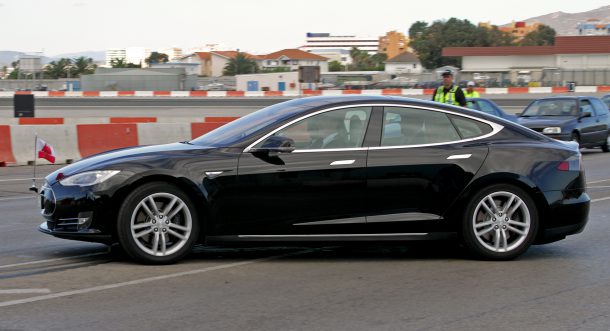#promotion
QOTD: How Long Should a Street Car Be Able to Run on a Track? What If It's Electric?
I doubt that very many of you have seen Robb Holland’s series over on Jalopnik about turning a salvage-title Z06 into a Pikes Peak car. That’s okay; unless you’re a particular fan of Corvettes or of Robb Holland you aren’t missing much.
At the heart of it, the series is a fairly typical exercise in what I call “Journalist Stone Soup Motorsports” — you call everybody in the world to get as much free stuff as you can and then you offer to mention them on your website. Some people are much better at this than others; Mr. Holland’s vehicular opus looks like it consumed about a thousand man-hours of free labor and maybe fifty grand worth of free stuff. Feel free to compare that to the incompetent promotional efforts of your humble author, who won an AER race last month with uh, um… some year-old, half-worn tires courtesy of Dunlop. (Thank you, Dunlop!) This is no doubt due to the fact that Robb is a handsome, well-liked television personality, whereas I’m primarily notable for being kicked out of NASA Performance Touring twice in four seasons.
There is, however, something of value in Robb’s most recent article. In the process of excusing the Corvette Z06 from overheating shenanigans (hmm… why does this sound familiar?), he asks, “Personally, I think the whole [overheating] thing is load of crap… First, how long should a street car be able to run on track before having to stop? One minute, five minutes, 100 minutes? Twenty-four hours? What’s the benchmark? A race track is a very different environment than the street. You can’t design a car to work well in both.”
It’s easy to dismiss this by pointing out all the cars that can complete SCCA and NASA sprint races with bone-stock drivetrains, but if the question isn’t relevant now, it’s about to be extremely relevant. The electric car is coming, and it’s not going to handle racing terribly well. In fact, it’s not even going to handle hot weather or off-track high speeds terribly well. So what does it need to be able to do?
Honda's Hot Shoe: We Came for the Neoprene Vamp, But We Stayed for the Articulated Nodes
Where do I start?
So, Honda unveiled a shoe yesterday, and it’s the next best thing to owning and driving a 2016 Civic.
At least, that’s what we’re led to believe. The limited edition…shoe…is a collaboration between Honda (maker of 3,000 pound vehicles that can drive places and are way pricier than pants), lifestyle-oriented digital media company Thrillist and menswear company JackThreads.
Yes, it’s called the HT3 Driving Shoe, and it premiered alongside the car that inspired it at a Thrillist-hosted Los Angeles shindig. We can’t confirm rumors that rioting broke out due to shoe anticipation.
Lotus Evora 400, If You Don't Know What It Is #itsnotforyou
While most car companies try to persuade broad swatches of people to buy their cars, Lotus is trying a new/old approach in promoting their new Evora 400 model, telling some folks that maybe Lotus’ fastest model is just not for them.
Piston Slap: Sponsor My Ride?
Charge me…pull my finger? (photo courtesy: OP)
TTAC Commentator John R writes:
Hey Sajeev,
Hope this finds you well. I wanted to get your opinion on car sponsorships…if they still exist. I see a bunch of websites all over claiming to get a person’s car repaired or modded up on someone else’s dime. I look at these sites and they scream SCAM to me.
Maybe it’s because they look like throw backs to GeoCities…
Automotive Wayback Machine: Trail of the Rocket – Lucille and Johnny Tour an Oldsmobile Plant Circa 1951
Last week we ran a post of mine about the Jam Handy Organization, a motion picture studio located in the Detroit area that created many of General Motors’ promotional films for decades. A couple of the readers liked my idea of posting some more of those vintage films as a recurring feature here on TTAC. Jam Handy, though, wasn’t the only person who recognized the potential of using motion pictures to promote the sale of automobiles.



















Recent Comments